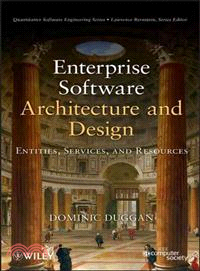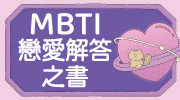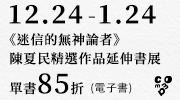Enterprise Software Architecture And Design: Entities, Services, And Resources
商品資訊
ISBN13:9780470565452
出版社:John Wiley & Sons Inc
作者:Duggan
出版日:2012/02/09
裝訂/頁數:精裝/512頁
定價
:NT$ 5850 元優惠價
:90 折 5265 元
若需訂購本書,請電洽客服 02-25006600[分機130、131]。
商品簡介
作者簡介
目次
相關商品
商品簡介
This book fills a gap between high-level overview texts that are often too general and low-level detail oriented technical handbooks that lose sight the "big picture". This book discusses SOA from the low-level perspective of middleware, various XML-based technologies, and basic service design. It also examines broader implications of SOA, particularly where it intersects with business process management and process modeling. Concrete overviews will be provided of the methodologies in those fields, so that students will have a hands-on grasp of how they may be used in the context of SOA.
作者簡介
Dominic Duggan, PhD, is a faculty member in the Department of Computer Science at Stevens Institute of Technology. His research interests are in the design and development of secure and reliable software systems. His publications have appeared in leading journals and conferences.
目次
List of Figures xv
Acknowledgements xxiii
1. Introduction 1
References / 6
2. Middleware 7
2.1 Enterprise Information Systems / 7
2.2 Communication / 12
2.3 System and Failure Models / 21
2.4 Remote Procedure Call / 34
2.5 Message-Oriented Middleware / 42
2.6 Web Services and Service-Oriented Architecture (SOA) / 46
2.7 Cloud Computing / 52
2.8 Naming and Discovery / 55
2.9 Further Reading / 56
References / 57
3. Data Modeling 59
3.1 Entities and Relationships / 60
3.1.1 Concepts and Entities / 60
3.1.2 Attributes and Relationships / 61
3.1.3 Properties of Relationship Types / 65
3.1.4 Special Relationship Types / 69
3.2 XML Schemas / 74
3.3 Defining New Types / 79
3.3.1 Defining Simple Types / 79
3.3.2 Defining Complex Types / 82
3.4 Derived Types / 85
3.4.1 Derived Simple Types / 86
3.4.2 Derived Complex Types / 87
3.5 Document Hierarchies / 94
3.6 Relationship Types in XML Schemas / 98
3.7 Metaschemas and Metamodels / 100
3.8 Further Reading / 102
References / 102
4. Data Processing 104
4.1 Processing XML Data / 104
4.1.1 Tree Processing / 105
4.1.2 Schema Binding / 109
4.1.3 Stream Processing / 114
4.1.4 External Processing / 119
4.2 Query Languages and XQuery / 122
4.3 XML Databases / 134
4.3.1 Storage as Relational Tables / 135
4.3.2 Storage as Large Strings / 137
4.3.3 Native XML Storage / 137
4.4 Web Services / 138
4.4.1 SOAP: (not so) Simple Object Access Protocol / 139
4.4.2 WSDL: Web Services Description Language / 145
4.4.3 Web Service Policy / 155
4.5 Presentation Layer: JSON and JQUERY / 159
References / 166
5. Domain-Driven Architecture 167
5.1 Software Architecture / 167
5.2 Domain-Driven Design / 168
5.3 Application Frameworks / 175
5.4 Domain-Specific Languages (DSLs) / 180
5.5 An Example API for Persistent Domain Objects / 188
5.6 Domain-Driven Architecture / 197
5.7 Further Reading / 205
References / 205
6. Service-Oriented Architecture 207
6.1 Services and Procedures / 207
6.2 Service-Oriented Architecture (SOA) / 211
6.3 Service Design Principles / 216
6.4 Service-Oriented Architecture (SOA) Governance / 218
6.5 Standardized Service Contract / 221
6.5.1 Operations Contract / 222
6.5.2 Data Contract / 223
6.5.3 Policy Contract / 224
6.5.4 Binding Contract / 226
6.5.5 Contract Versioning / 231
6.6 Service Loose Coupling / 237
6.6.1 Motivation for Loose Coupling / 237
6.6.2 Contract Development / 239
6.6.3 Loose Coupling Patterns / 242
6.6.4 Cost of Loose Coupling / 246
6.7 Service Abstraction / 248
6.7.1 Platform Abstraction / 248
6.7.2 Protocol Abstraction / 249
6.7.3 Procedural Abstraction / 261
6.7.4 State Abstraction / 264
6.7.5 Data Abstraction / 269
6.7.6 Endpoint Abstraction / 278
6.8 Service Reusability / 278
6.8.1 Parameterization and Bounded Polymorphism / 279
6.8.2 Subtyping, Inheritance, and Contracts / 284
6.8.3 Does Service-Oriented Architecture Require Subtyping? / 289
6.8.4 Patterns for Service Reusability / 292
6.9 Service Autonomy / 299
6.9.1 Replicating Computation / 300
6.9.2 Replicating State / 303
6.9.3 Sources of Errors and Rejuvenation / 308
6.9.4 Caching / 313
6.10 Service Statelessness / 323
6.10.1 Contexts and Dependency Injection / 331
6.11 Service Discoverability / 336
6.11.1 Global Discovery / 336
6.11.2 Local Discovery / 337
6.11.3 Layered Naming / 347
6.12 Further Patterns / 351
6.13 Further Reading / 352
References / 352
7. Resource-Oriented Architecture 359
7.1 Representational State Transfer / 359
7.2 RESTful Web Services / 369
7.3 Resource-Oriented Architecture (ROA) / 379
7.4 Interface Description Languages / 387
7.4.1 Web Services Description Language (WSDL) / 387
7.4.2 Web Application Description Language (WADL) / 390
7.5 An Example Application Program Interface (API) for Resource-Oriented Web Services / 396
7.6 Hypermedia Control and Contract Conformance / 406
7.7 Concluding Remarks / 412
7.8 Further Reading / 414
References / 414
Appendix A: Introduction to Haskell 416
A.1 Types and Functions / 416
A.2 Type Classes and Functors / 425
A.3 Monads / 431
A.4 Further Reading / 436
References / 436
Appendix B: Time in Distributed Systems 437
B.1 What Time Is It? / 437
B.2 Time and Causality / 443
B.3 Applications of Logical and Vector Time / 450
B.3.1 Mutual Exclusion / 450
B.3.2 Quorum Consensus / 451
B.3.3 Distributed Logging / 456
B.3.4 Causal Message Delivery / 458
B.3.5 Distributed Snapshots / 463
B.4 Virtual Time / 468
B.5 Further Reading / 470
References / 470
Index 473
Acknowledgements xxiii
1. Introduction 1
References / 6
2. Middleware 7
2.1 Enterprise Information Systems / 7
2.2 Communication / 12
2.3 System and Failure Models / 21
2.4 Remote Procedure Call / 34
2.5 Message-Oriented Middleware / 42
2.6 Web Services and Service-Oriented Architecture (SOA) / 46
2.7 Cloud Computing / 52
2.8 Naming and Discovery / 55
2.9 Further Reading / 56
References / 57
3. Data Modeling 59
3.1 Entities and Relationships / 60
3.1.1 Concepts and Entities / 60
3.1.2 Attributes and Relationships / 61
3.1.3 Properties of Relationship Types / 65
3.1.4 Special Relationship Types / 69
3.2 XML Schemas / 74
3.3 Defining New Types / 79
3.3.1 Defining Simple Types / 79
3.3.2 Defining Complex Types / 82
3.4 Derived Types / 85
3.4.1 Derived Simple Types / 86
3.4.2 Derived Complex Types / 87
3.5 Document Hierarchies / 94
3.6 Relationship Types in XML Schemas / 98
3.7 Metaschemas and Metamodels / 100
3.8 Further Reading / 102
References / 102
4. Data Processing 104
4.1 Processing XML Data / 104
4.1.1 Tree Processing / 105
4.1.2 Schema Binding / 109
4.1.3 Stream Processing / 114
4.1.4 External Processing / 119
4.2 Query Languages and XQuery / 122
4.3 XML Databases / 134
4.3.1 Storage as Relational Tables / 135
4.3.2 Storage as Large Strings / 137
4.3.3 Native XML Storage / 137
4.4 Web Services / 138
4.4.1 SOAP: (not so) Simple Object Access Protocol / 139
4.4.2 WSDL: Web Services Description Language / 145
4.4.3 Web Service Policy / 155
4.5 Presentation Layer: JSON and JQUERY / 159
References / 166
5. Domain-Driven Architecture 167
5.1 Software Architecture / 167
5.2 Domain-Driven Design / 168
5.3 Application Frameworks / 175
5.4 Domain-Specific Languages (DSLs) / 180
5.5 An Example API for Persistent Domain Objects / 188
5.6 Domain-Driven Architecture / 197
5.7 Further Reading / 205
References / 205
6. Service-Oriented Architecture 207
6.1 Services and Procedures / 207
6.2 Service-Oriented Architecture (SOA) / 211
6.3 Service Design Principles / 216
6.4 Service-Oriented Architecture (SOA) Governance / 218
6.5 Standardized Service Contract / 221
6.5.1 Operations Contract / 222
6.5.2 Data Contract / 223
6.5.3 Policy Contract / 224
6.5.4 Binding Contract / 226
6.5.5 Contract Versioning / 231
6.6 Service Loose Coupling / 237
6.6.1 Motivation for Loose Coupling / 237
6.6.2 Contract Development / 239
6.6.3 Loose Coupling Patterns / 242
6.6.4 Cost of Loose Coupling / 246
6.7 Service Abstraction / 248
6.7.1 Platform Abstraction / 248
6.7.2 Protocol Abstraction / 249
6.7.3 Procedural Abstraction / 261
6.7.4 State Abstraction / 264
6.7.5 Data Abstraction / 269
6.7.6 Endpoint Abstraction / 278
6.8 Service Reusability / 278
6.8.1 Parameterization and Bounded Polymorphism / 279
6.8.2 Subtyping, Inheritance, and Contracts / 284
6.8.3 Does Service-Oriented Architecture Require Subtyping? / 289
6.8.4 Patterns for Service Reusability / 292
6.9 Service Autonomy / 299
6.9.1 Replicating Computation / 300
6.9.2 Replicating State / 303
6.9.3 Sources of Errors and Rejuvenation / 308
6.9.4 Caching / 313
6.10 Service Statelessness / 323
6.10.1 Contexts and Dependency Injection / 331
6.11 Service Discoverability / 336
6.11.1 Global Discovery / 336
6.11.2 Local Discovery / 337
6.11.3 Layered Naming / 347
6.12 Further Patterns / 351
6.13 Further Reading / 352
References / 352
7. Resource-Oriented Architecture 359
7.1 Representational State Transfer / 359
7.2 RESTful Web Services / 369
7.3 Resource-Oriented Architecture (ROA) / 379
7.4 Interface Description Languages / 387
7.4.1 Web Services Description Language (WSDL) / 387
7.4.2 Web Application Description Language (WADL) / 390
7.5 An Example Application Program Interface (API) for Resource-Oriented Web Services / 396
7.6 Hypermedia Control and Contract Conformance / 406
7.7 Concluding Remarks / 412
7.8 Further Reading / 414
References / 414
Appendix A: Introduction to Haskell 416
A.1 Types and Functions / 416
A.2 Type Classes and Functors / 425
A.3 Monads / 431
A.4 Further Reading / 436
References / 436
Appendix B: Time in Distributed Systems 437
B.1 What Time Is It? / 437
B.2 Time and Causality / 443
B.3 Applications of Logical and Vector Time / 450
B.3.1 Mutual Exclusion / 450
B.3.2 Quorum Consensus / 451
B.3.3 Distributed Logging / 456
B.3.4 Causal Message Delivery / 458
B.3.5 Distributed Snapshots / 463
B.4 Virtual Time / 468
B.5 Further Reading / 470
References / 470
Index 473
主題書展
更多
主題書展
更多書展今日66折
您曾經瀏覽過的商品
購物須知
外文書商品之書封,為出版社提供之樣本。實際出貨商品,以出版社所提供之現有版本為主。部份書籍,因出版社供應狀況特殊,匯率將依實際狀況做調整。
無庫存之商品,在您完成訂單程序之後,將以空運的方式為你下單調貨。為了縮短等待的時間,建議您將外文書與其他商品分開下單,以獲得最快的取貨速度,平均調貨時間為1~2個月。
為了保護您的權益,「三民網路書店」提供會員七日商品鑑賞期(收到商品為起始日)。
若要辦理退貨,請在商品鑑賞期內寄回,且商品必須是全新狀態與完整包裝(商品、附件、發票、隨貨贈品等)否則恕不接受退貨。
























